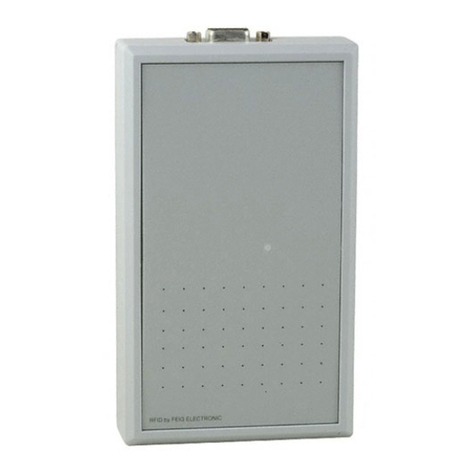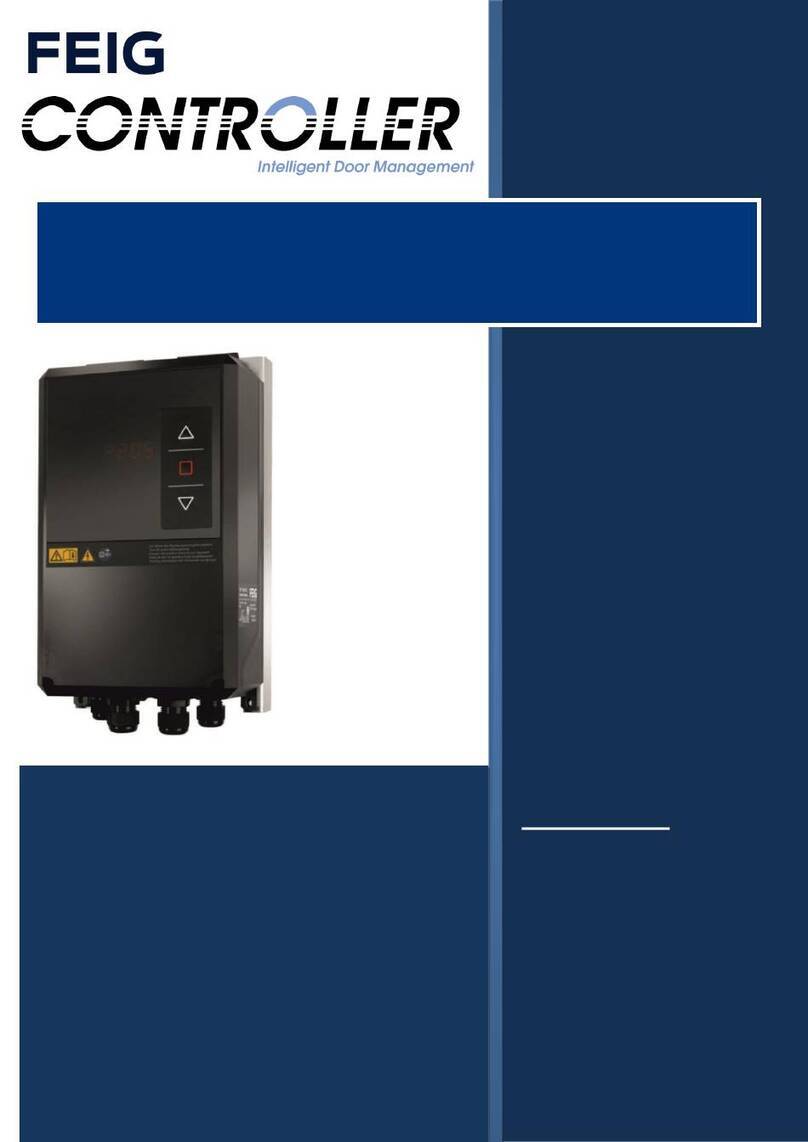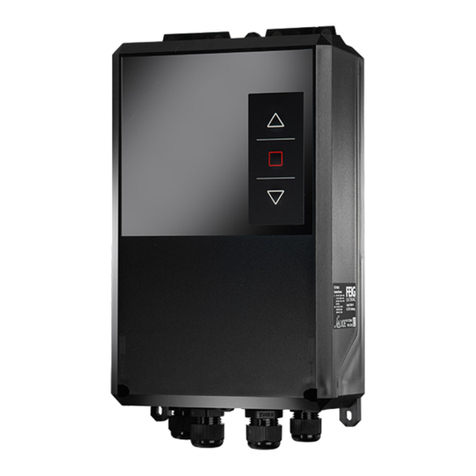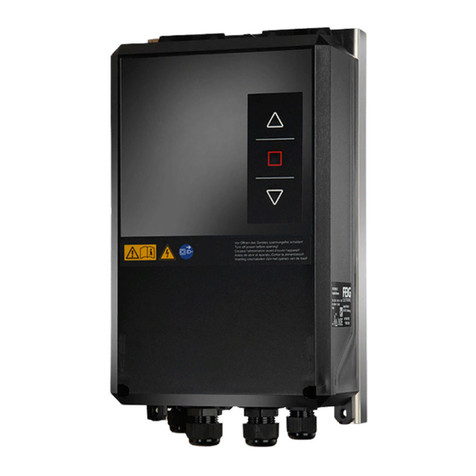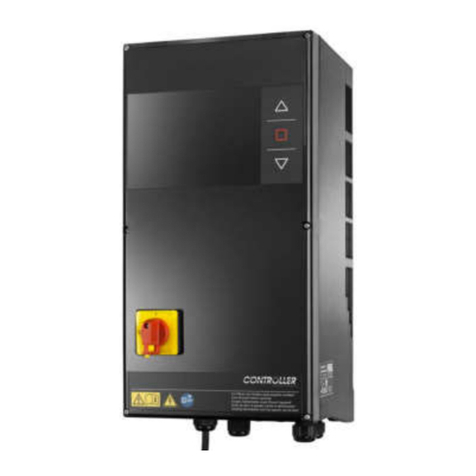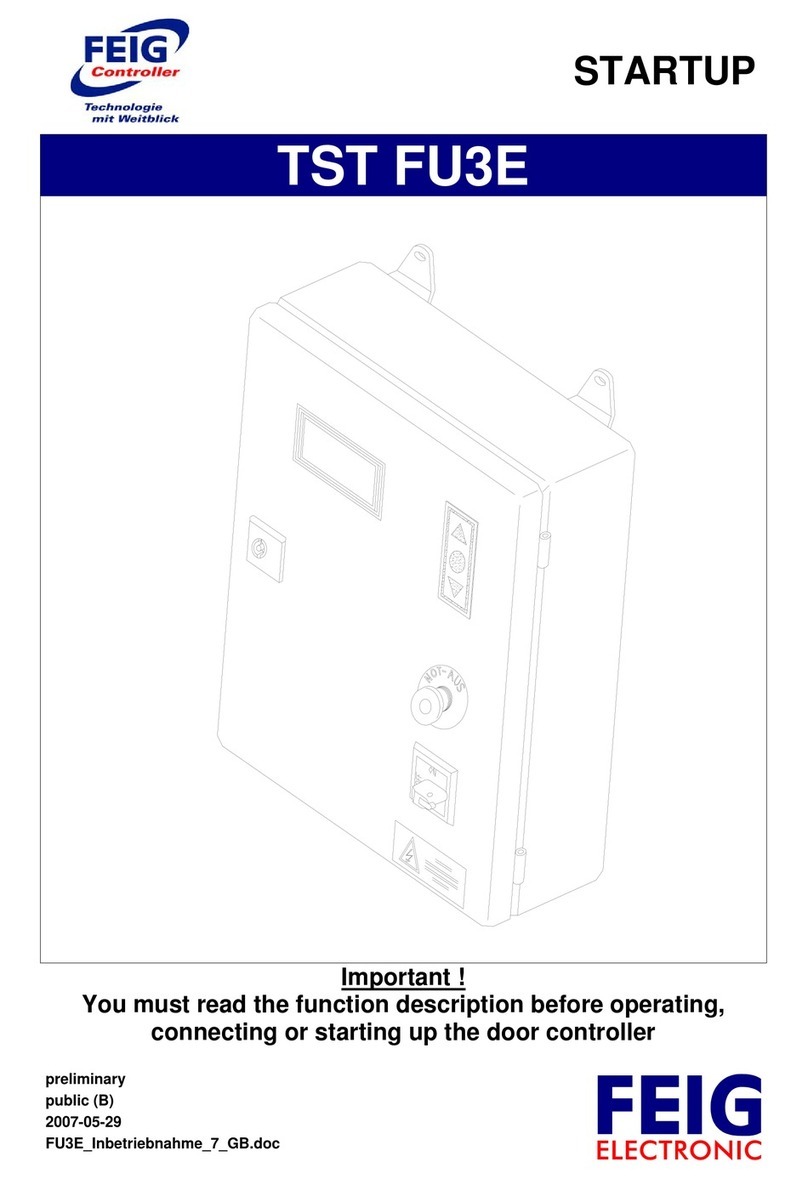
TST Assembly instructions FUF2 / FU3F -A/-C/-F
FEIG ELECTRONIC GmbH page 24 of 94 FUxF_Montageanleitung_GB_13.docx
4 Electrical connection
ATTENTION
Any wiring, testing and maintenance work on an
open controller shall only be performed when
power has been turned off. Pay particular
attention to the points shown under "Safety
information".
The controller must never be operated while it is
open.
When the controller has been turned off,
dangerous voltage levels are still present for up
to 5 minutes.
During the downtime, no isolation exists between
the amplifier module and the motor terminal.
Touching electronic components is dangerous
due to residual voltages.
Never operate the controller while the cover is
removed.
When the installation was completed, check that
the system was configured correctly and that the
safety system works properly.
The controller may be opened only if all the poles
of the supply voltage have been turned off. The
controller must never be operated while it is
open.
Never operate the controller without having
connected the protective earth conductor. The
absence of a protective earth conductor will
result in hazardous voltages on the controllers
housing caused by terminal capacitances. The
RFI filters integrated into the controller may
increase the leakage current up to a max. of 7
mA (see DIN EN 60335-1 section 16.2). Prior to
delivery, the manufacturer will test individual
units in this respect
Hazardous voltages remain stored in the DC-bus
capacitors for up to five minutes after power has
been turned off. The discharge time until voltages
fall below 60VDC is a maximum of 5 minutes.
Touching internal controller components within
this discharge time is hazardous.
A defective switching power supply can
considerably increase the discharge time of the
DC-bus capacitors before reaching a voltage less
than 60VDC. In this case, discharge times of up
to 10 minutes may be possible.
The processor circuit is galvanically connected to
the power line. Important: when taking
measurements on the processor circuit, do not
use test equipment with PE reference to the
measuring circuit.
The controller must never be operated with a
damaged membrane keypad or Display window.
Damaged keypads and Display window must be
replaced. To prevent damage to the keypad, do
not use pointed objects to operate the keys. The
keypad is only designed to be operated by
human fingers.
If the potential free contacts of the output relays
or other terminals are supplied by an external
voltage, i.e. dangerous voltages that are still
present after switching off the controller or
disconnecting power, you must attach a
suitable warning sign to the housing.
ATTENTION
You must disconnect all
supply circuits before opening the housing
to access the terminals"
When moving the door in deadman mode,
ensure that the operator has an unobstructed
view of the door area, since in this mode safety
equipment such as safety edge and photo eyes
are defeated.
Parameter settings and the speed as well as
the operation of the safety devices must be
checked. Parameter settings and the function of
the safety devices must to be checked.
